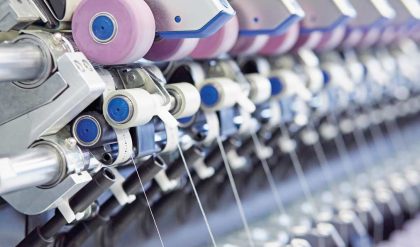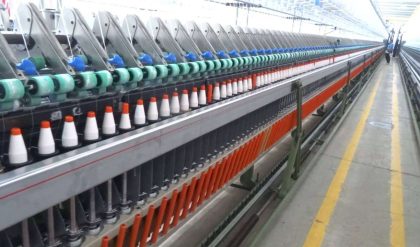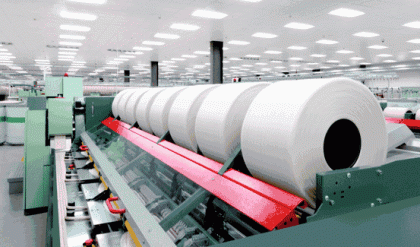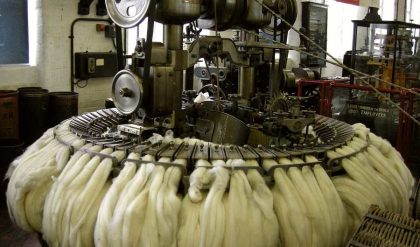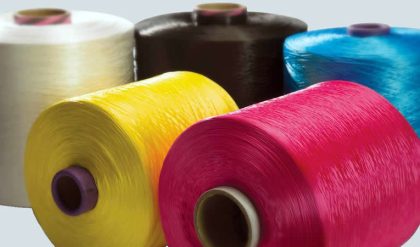In the course of processing staple fibers on spinning machines, many short fibers are lost as fly and a considerable quantity of fiber particles and dust is released. Dust and fly are deposited on machine components and continually agitated by rotating and revolving parts such as spindles, drums and drive belts.
This has always represented a disturbance, particularly in relation to repair and maintained and deterioration in product quality. Incase of increased production speeds and higher drafts, the problem will be worse.
On the ring frame, most fly and dust (up to 85%) is released in the spinning triangle and the main drafting field. The remainder is set free mainly at the balloon and traveller.
Since release of fly cannot be prevented, arrangements must be made for its removal. Previously, this was carried out solely by manual cleaning of the machine elements, but now blowing down equipment is generally used for this purpose.
However it must be noted that blowing down devices do not operate in an optimal manner, since they do not remove dust and fly at the point of generation. Instead, they blow waste off the machine parts and hence whirl it around the machine.
Classification
Cleaning devices can be classified as follows:
o Stirrers
o Blowing down devices
o Suction devices
o Combined blowing and suction devices.
The device can be operated as:
o Individual installations, i.e. devices for cleaning a single machine; or
o Grouped installations, in which a device patrols 2 to 8 machines.
Currently, a very widely used arrangement involves a combined blowing and suction device moving back and forth along an open path in a grouped installation.
Stirrers
These are simple fans with short blowing nozzles, driven by a small electric motor and running on power supply rails above the machines. Nowadays, they are used only above winders since they cannot perform a directed cleaning operation.
Blowing / suction devices
The most widely used form of device today works in the same way as the stirrer, although with much greater power input (~ 3kW; airflow rate ~ 5000 m 3/h; air speed at the nozzles ~ 50 m/sec). The device also has several hoses, some of which hang down to the ground. One or two of these hoses per side work as blowers and the other sucks up material which has been blown down onto the floor.
The blowing hoses are fitted at different heights with blower nozzles aimed directly at prominent parts of the machines so that the airstream tends to blow lint downloads.
Where suction devices are in use, a filter and a filter cleaning devices are also required. Usually the travelling cleaner moves to an end of the rail (machine end) where a collector box is provided into which the material extracted by the filter is ejected.
All collector boxes can be coupled to a central suction system and preferably this feeds a pneumatic bale press. Fig.1 shows the blowing and suction device placed on the ring spinning machine.
